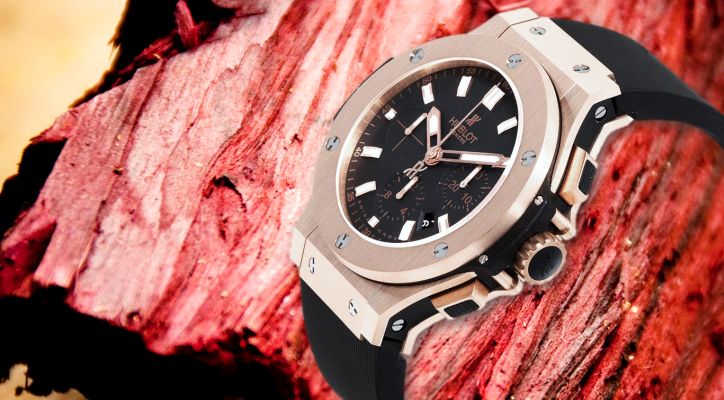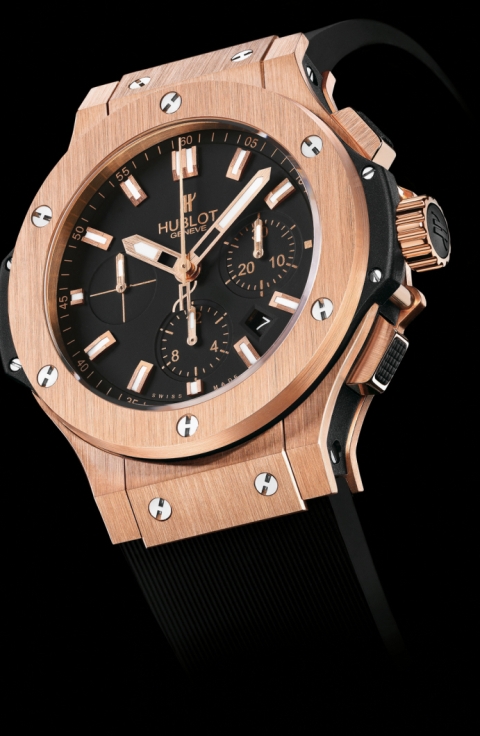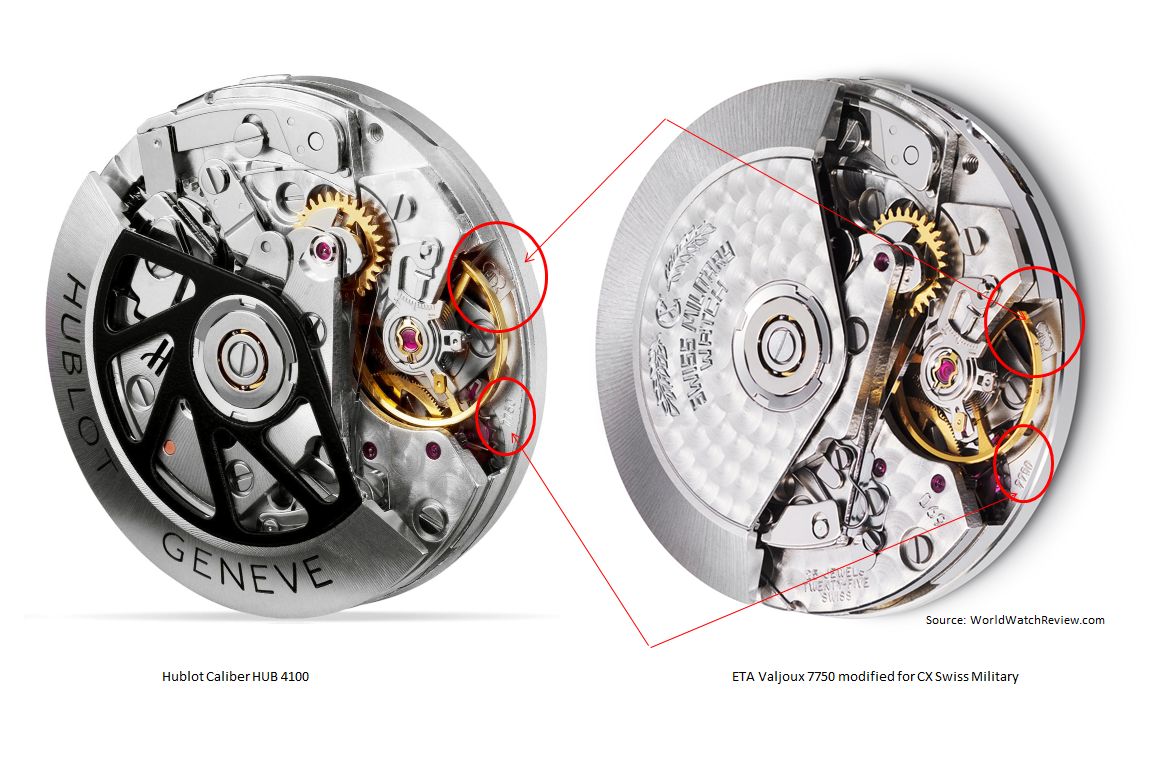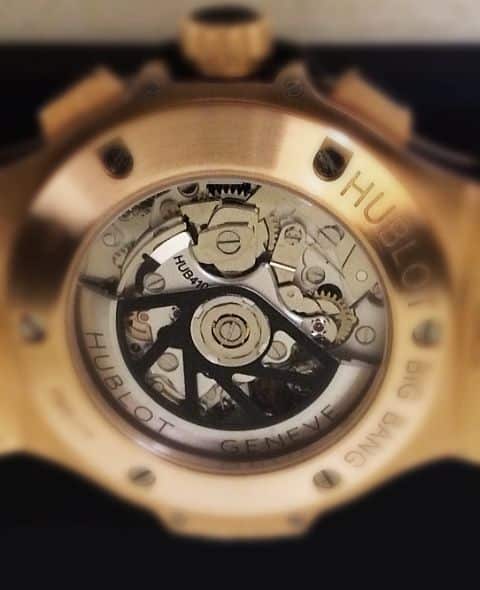
Hublot, one of the youngest (and the most daring) ultra-luxury watchmaking brands, has introduced yet another iteration of its top-selling Big Bang collection of sporty chronographs. The 2010 Big Bang Gold Chronograph (ref. 301.PX.1180.RX) comes in a generous 44.5-mm case made of brushed 18-karat red gold.
Like the Big Bang Evolution model that was revealed last summer, the new Big Bang gold sports the same HUB 4100 automatic chronograph movement.
Built of 252 parts and sporting a tungsten carbide rotor with black PVD coating, the caliber is reliable, accurate, and (last, but not least) is pleasant to look at, although it features an understated (something you don’t expect from Hublot) decor with sandblasted and rhodium-plated main plate, micro-blasted, beveled and polished bridges, and partly skeletonized winding rotor.
Thanks to its reinforced mainspring, the movement stores enough energy to run for at least 42 hours after you take it off your wrist. It is perfectly visible through the transparent case back cover.

Although Hublot, like many other ultra-luxury brands that are forced to use third-party mechanisms to power their particularly expensive collections, is fairly secretive when it comes to sources of their calibers, I am fairly certain that the HUB 4100 is based on the well-known (some may even call it ‘legendary’ if a bit dated) ETA Valjoux 7750 chronograph ebauche.
As you can see on the picture below that compares the HUB4100 with a version of ETA 7750 modified by CX Swiss Military (another Swiss-based brand that sells their watches at 1/10th the price of a regular Hublot chronograph,) only the aforementioned oscillating weight is different, while the rest of the mechanisms -including a “7750” stamp on the mainplate- are the same.

I can’t say that the choice of base movement makes this expensive chronograph any less interesting: just keep in mind that the lion’s share of pricing here is formed by the material of the case and the logo on the dial: like most of its siblings, the Big Bang Gold is more of an extremely expensive accessory rather than a piece of High Horology. On the other hand, Hublot openly admits that their timekeepers are mostly designed for those who value the exterior over the mechanical guts that make the piece work.
The watch sports the Big Bang’s signature design with its layer cake 18-karat rose gold case, the chronograph push-pieces, as well as the setting crown featuring black rubber inserts. The fixed bezel and the black rubber strap are secured with their trademark H-shaped screws.
As usual for the collection, the dial is legible and easy to grasp with a single glance. All hands (except, perhaps, for the central-seconds points) feature generous layers of white Superluminova that look particularly contrasting on the back background during the day and emit that signature bright greenish glow at night.

The trapezoid-shaped date window, which is placed between 4 and 5 o’clock, is also easy to read, although I would prefer it to be somewhat bigger.
Hublot does not plan to limit the Big Bang Gold’s production. However, at a suggested price of €20,200, there is no need to artificially limit the model’s production. After all, there are not so many customers willing to buy something as expensive if it doesn’t come from Rolex or Breguet.
See also: A. Lange & Sohne Zeitwerk Luminous (Ref. 140.035)
WWR Verdict
Originality 4/5
Build Quality: 5/5
Usability: 4.5/5
Overall Legibility: 4/5
Nighttime Legibility: 4/5
Value for Money: 4/5
Overall Rating: 4/5
Photos: Hublot
Hublot Big Bang Gold (ref. 301.PX.1180.RX) specification
Price: €20,200 (MSRP)
Movement: Caliber HUB 4100 (based on ETA 7750,) automatic, 252 parts, 27 jewels, Swiss Made
Functions: Hours, minutes, small seconds, date, chronograph
Power reserve: 42 hours
Case: 5N Red gold alloy
Shape: Round
Size: 44.50 mm
Case height: 14.50 mm
Dial: Black
Hands: Red gold
Water resistance: 100 meters
Strap: Black rubber with red gold folding clasp
Crystal: Sapphire, antireflective coating on both sides
Back: Sapphire
